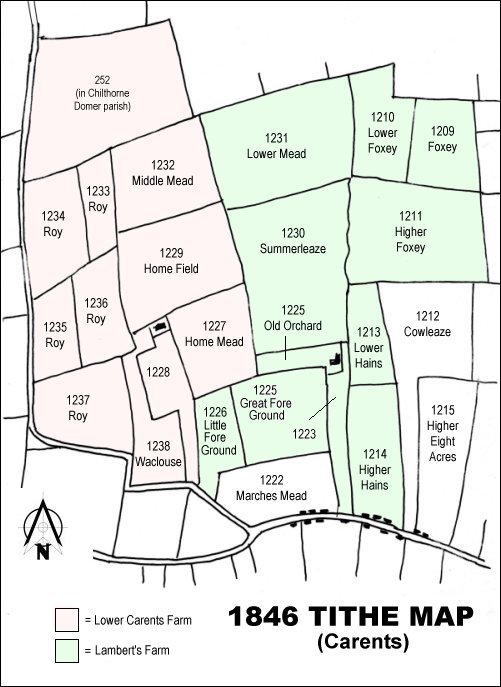Marches Mead
Marches Mead
Accommodation land in Yeovil Marsh
Marches Mead (Parcel 1222) was accommodation land in Yeovil Marsh. Accommodation land is a term that originated in the early nineteenth-century and was applied to land, often adjoining a town or village, that was let for cultivation or pasture. Accommodation land generally did not form part of a farm.
At the time of the 1846 Tithe Apportionment, Marches Mead was owned by John Newman and the occupier was George Frost. Marches Mead was recorded as meadow for growing hay and measured 12a 2r 20p. This acreage appears to be incorrect, bearing in mind that the maps of 1842 and 1919 show very little difference and the field does seem to be more akin to five acres than twelve.
In the 1919 sale of six Yeovil Marsh farms, Marches Mead (un-named in the sale catalogue held at the Taunton Heritage Centre) was listed as Lot 17 and described as "A choice Fertile enclosure of Accommodation Arable Land" but measuring 5a 1r 14p. The catalogue continued "It abuts the main Yeovil-Ilchester Road and the Village Street and has a frontage of about 500 feet... Let with other Lands to Mr W Davis on a yearly Ladyday Tenancy... This tenancy expires by notice to quit at Ladyday 1920". From a pencilled note in the catalogue, it appears that ownership of Marches Mead was purchased by a Mr Tucker of Yeovil.
Marches Mead (Parcel 1222) was bounded on the north by Little Fore Ground (Parcel 1222) and Great Fore Ground (Parcel 1225), to the east by Lambert's farmhouse and garden (Parcel 1228) and to the south and west by the road through Yeovil Marsh.
For details on historic land measurement (ie acres, roods and perches) click here.
MMMAP

At the time of the 1919 sale of the six Marsh farms, Lower Carent's Farm is shown in pink and Lambert's Farm is shown in green.